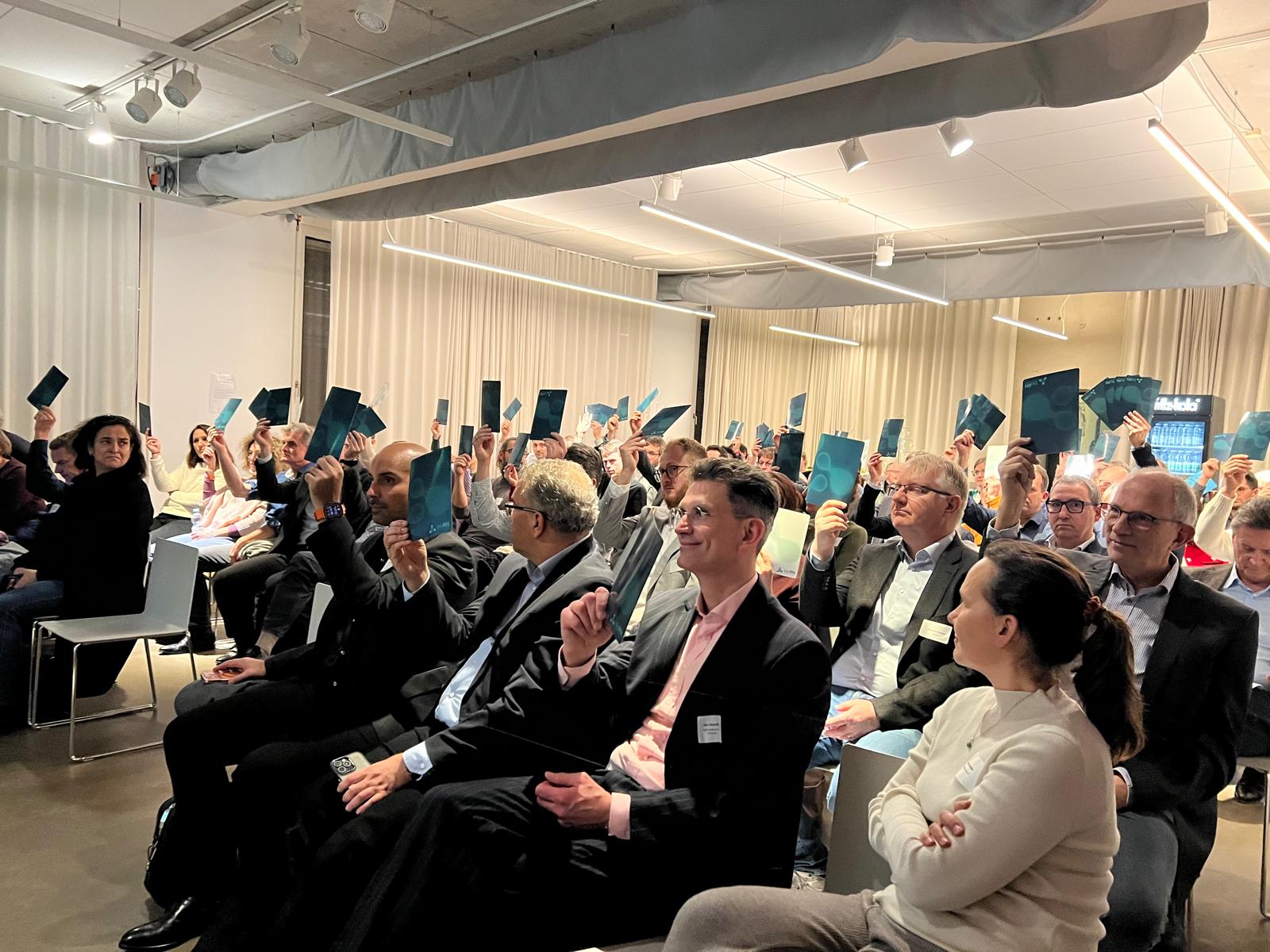A new EMBL microscope hits the road

Researchers developed a microscope made to travel – miniature in scale, fast in imaging samples, and giant in resolution.

Microscopy allows us to see the unknown, solve mysteries, and advance knowledge. When EMBL scientists were looking to take the organisation’s world-class advanced microscopy from the lab to the field, as part of the Traversing European Coastlines (TREC) expedition, the Prevedel Group was prepared. Serendipitously, this research group realised that a recently developed microscopy approach could potentially be downsized to fit a scientific travel mode.
In EMBL Heidelberg’s Prevedel Group, the researchers have built their own ‘house of microscopy’, combining optical, mechanical, and software engineering to construct new microscopes and fill existing gaps and limitations in the field of biological imaging.
“We do our research inspired by the biology that surrounds us at EMBL,” said Robert Prevedel, Group Leader at EMBL Heidelberg. “I consider that one of the strongest points of our lab. Being positioned in EMBL interdisciplinary research allows us to build practical prototypes and then see their application in collaboration with scientists not only from Heidelberg but also from across Europe.”
One spectacular example of this technological-to-biological transition was the construction of the mobile Optical Coherence Microscope (OCM), which took a ride alongside the TREC expedition, which conducted its sampling phase in 2023 and 2024.
To understand coastline ecosystems and organisms better, some TREC scientists wanted to image live animal behaviour. This imaging approach demands a microscope that can image both in high resolution and speed to measure organisms’ size and 3D volume distributions. Ling Wang, microscopist in the Prevedel Group, accepted the challenge and constructed the OCM.
“OCM is a further development from OCT, Optical Coherence Tomography, in which broadband light helps get a higher resolution. This is exactly why we converted the name from OCT to OCM since our approach can provide images with a micrometre resolution, the gold standard of microscopy approaches,” Wang said. “In OCM, three-dimensional images can be formed from light that biological samples reflect.”
A lot of biological imaging relies on adding dyes or fluorescent labels, which can then be detected by a microscope upon excitation by a laser. However, since most organisms collected in the field are not fluorescently labelled, a system that can use label-free methods to image biological tissues instead is more valuable – like OCM. OCM is therefore an ideal microscope to use on samples that need to be imaged right after collection from the ecosystem. To do this immediate imaging, the microscope must be close to the sampling sites. Thus, the OCM needed to become mobile.
This became possible thanks to the EMBL Advanced Mobile Laboratory. Wang and colleagues essentially miniaturised this microscope into a small portable box ready for a scientific voyage.
“We were able to make the microscope small enough so that it fits into the size of a suitcase and can be taken right with us,” Prevedel said. From its introduction in Barcelona, the mobile OCM went to Naples, where it was also demonstrated during an EMBO course, and then to Greece – the last stop of the TREC expedition.
“The OCM filled a unique niche which we couldn’t cover with commercially available microscopes,” said Nikolaus Leisch, operational manager of EMBL Mobile services. “This is an excellent example of connecting tech developers directly with users on site, enabling new projects and opening up new dimensions for all EMBL Mobile Laboratory users.”

The mobile OCM offered rare, 3D glimpses of the samples, letting scientists take images directly after collection, whether from land or sea. TREC scientists could analyse plankton, sea urchins, Platynereis worms right after collection from their native habitat. One special example is Acantharia, a type of marine plankton that scientists, until present, could not culture in the lab. So being able to now image this species right after collection was a game-changer. OCM also allowed TREC scientists to quantify rapid changes in animal behaviour, even those happening within a fourth of a second.

“Conventional light microscopes pose significant challenges for 3D imaging of plankton at sufficient speed,” said Thomas Beavis, a PhD student from the Vincent group at EMBL Heidelberg. “In my specific research question, OCM allowed us to track the movement diatoms – a specific type of plankton – with 3D imaging, which is much closer to their motility in the natural environment. OCM would allow us to look into individual ciliates attached to planktonic diatoms and understand how this symbiosis can help in the protection of this species from predation.”
After TREC sampling concluded, the mobile OCM returned to the Prevedel lab, awaiting its next biological adventure. Prevedel and colleagues are now exploring how to share this technology across scientific and geographical fields.
“EMBL is known for high-quality technology development, especially in the area of microscopy, which has also resulted in several commercial microscopes,” Prevedel said. “OCM is special because it was constructed here. It is the first microscope capable of going into the field while imaging in high resolution – fast, 3D, and free of requirements to label the biological samples.”
Prevedel Group
The Prevedel group develops new optical techniques for investigating dynamic cellular processes deep inside tissue in vivo. The group owns a range of microscopes that it has developed, aiming to increase tissue depth, imaging resolution, and bioimaging speed. The researchers also work on specific algorithms or AI applications to remove image noise, improve contrast and resolution, and improve imaging data processing and analysis.




